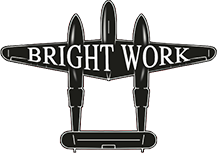When the winter’s over and a new season begins, it's time to think about ways…
Aircraft Maintenance Terms You Should Know
Do you ever hear a mechanic or fellow pilot use a term or acronym that you’re not familiar with? There are many terms and acronyms that are unique to the aviation industry, so it can be tough to keep up with all of them. Here are some of the most common maintenance-related terms that you should know about:
Maintenance
Before learning about more specific terms, it’s best to start by learning about maintenance in general. The Federal Aviation Administration (FAA) defines maintenance as any aircraft activity related to the inspection, overhaul, repair, preservation and replacement of parts. According to the FAA, preventative maintenance does not fall under this term.
AOG
This abbreviation stands for “aircraft on ground,” and refers to any plane that has a serious maintenance problem that prevents it from taking off. If your plane is AOG, you will need a mechanic to fix the issue before you can move forward with your flight. You may hear a pilot use this term to describe why his flight plans have been delayed.
Check
If you hear other pilots or mechanics refer to “checks,” they are talking about planned aircraft maintenance that is performed after a certain number of flight hours or take offs. How often does an aircraft need to undergo a check? Each plane is different, so it’s best to check with the manufacturer to see what they recommend.
Corrosion
Corrosion is the slow deterioration of the metal surfaces of an aircraft. If it is not taken care of during maintenance checks, it can ruin the appearance of your plane and also pose a safety risk. There are two types of corrosion that may affect aircrafts: electrochemical attacks, which occur when water is present, and direct chemical attacks, which occur when the surface of a plane is exposed to caustic liquids or gases. Corrosion can attack various parts of your aircraft, including the exterior surface, battery compartments, wheel well, cooling air vents, and water entrapment areas. But, these aren’t the only places that should be inspected to look for corrosion. Every part of your plane should be closely examined and if corrosion is found, it should be taken care of right away. Aircraft owners can easily remove corrosion from the surface of their planes with an aviation-approved polish such as Bright Work Polishes.
Cycle
Pilots keep track of how many times they’ve taken flight so they know when to perform maintenance checks. A cycle is considered one take off and one landing, and may also be referred to as a trip.
Line Maintenance
The term line maintenance can refer to a number of different things. First, if you need to have something on your plane fixed unexpectedly, this is referred to as line maintenance. It can also refer to planned maintenance checks that can be completed outside of a hangar, meaning no special equipment is needed to get the job done. Line maintenance can also be used to describe the maintenance performed on an aircraft after it has not been flown for a long period of time. For example, if you kept your plane in storage all winter and are preparing to fly it for the first time in spring, you will need line maintenance to ensure it is ready for take off.
Base Maintenance
Any type of maintenance that cannot be classified as line maintenance is referred to as base maintenance. Line maintenance usually involves minor tasks, while base maintenance involves much more time-consuming, complex tasks. For example, removing corrosion or performing work on the structure of the plane may fall under base maintenance.
Maintenance Logbook
The FAA requires any person who performs maintenance on an aircraft to record information about the work that was done in an official logbook. Each entry must include the date and the name of the person who completed the work. It must also include the name, certificate number, and type of certificate of the person who has reviewed the quality of the work and ensured it the plane is safe to fly. Aircraft owners are allowed to perform some maintenance tasks on their own and sign off on them in the logbook, but you will need to work with a mechanic for the more complex maintenance tasks.
Permanent Records
Some maintenance records need to be kept indefinitely, and these are referred to as permanent records of an aircraft. In fact, even if you sell your aircraft, the records must go to the new owner so they can continue to update them and comply with FAA requirements.
Rotable
Some aircraft parts cannot be repaired once they stop functioning properly, but others can. The parts that have unique serial numbers and can be repaired when they are not functioning properly are known as rotables. One example of a rotable part is an engine, which can rebuilt or repaired and then used again.
Expendable
This term refers to any item that can only be used once to perform aircraft maintenance. For example, you can’t reuse oil, so this would be known as an expendable item.
Scratches
Any kind of mark that penetrates the surface of your aircraft is known as a scratch. Some scratches can be removed with a high quality polish and buffer, but it’s important to remove them as soon as the scratches appear for the best results.
Dents
Dents are depressions on the surface of your aircraft’s exterior that are usually caused when a smooth object collides with your aircraft. If the bottom of the depression has displaced or creased metal, it is not considered a dent.
Remember, it doesn’t matter how long you’ve been a part of the aviation industry, there’s always more you can learn. Challenge yourself to learn more about the work that goes into maintaining your plane so you have a better appreciation for the mechanics you work with.

This Post Has 0 Comments